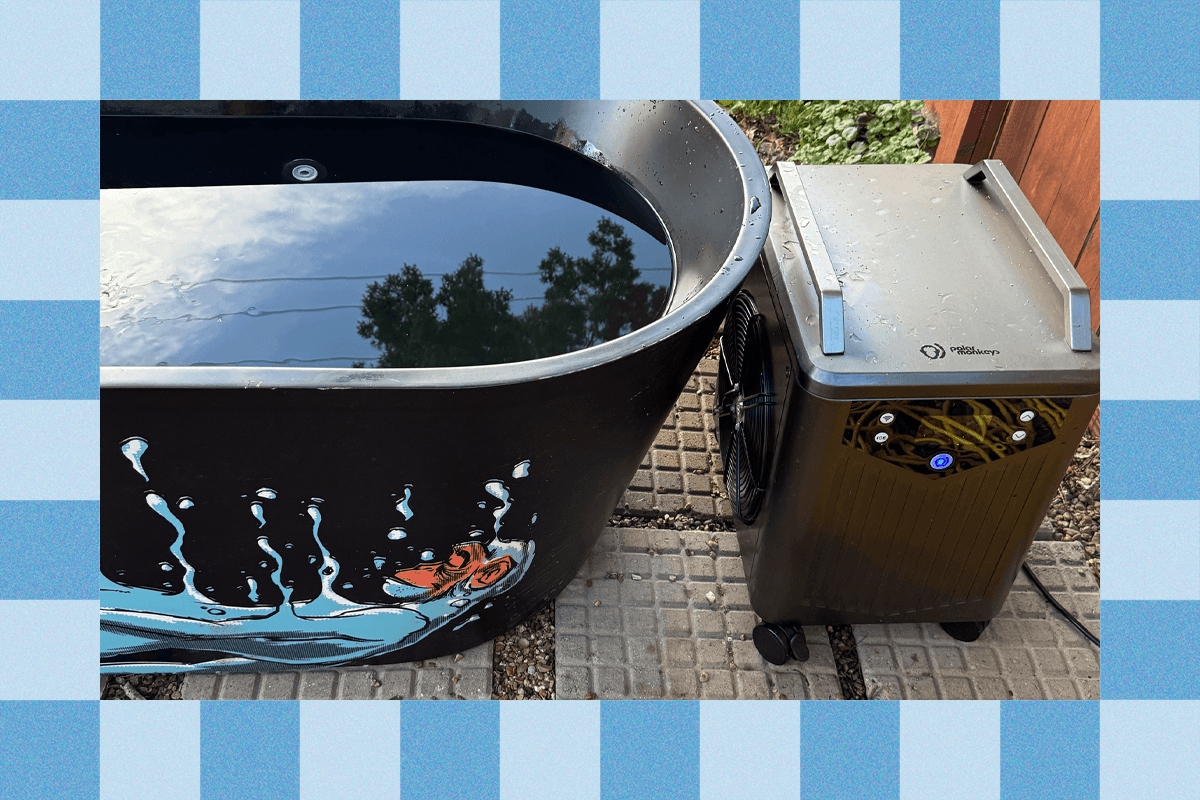All products featured on WIRED are independently selected by our editors. However, we may receive compensation from retailers and/or from purchases of products through these links. Learn more.
Cold plunging at the gym or having a chilly shower at home has become a popular practice in recent years. But is all the self-inflicted freezing really that good for you? With the promise of boosting your mood, providing mental clarity, and reducing muscle soreness post-workout, it may sound enticing, but it’s not for everyone. Aside from making your teeth chatter, there are the notable negatives as well as its positives to consider.
Tasked with the challenge of testing the latest cold-plunge pools earlier this year, I reluctantly jumped on the bandwagon. With my adrenaline pumping and my endorphins having a disco post-plunge, I was hooked and have since became an ice bath advocate. But as with every wellness craze, it’s worth keeping up with the ever-changing advice on best practices. Keen to find out more, I asked Gary Brecka, top biohacker and founder of The Ultimate Human, for advice on how to cold plunge for maximum benefit.
Whether you’re a seasoned pro or a newbie wondering what all the fuss is about, take a deep, calming breath and jump right in. Find options for your own ice bath in the WIRED guide to the best cold-plunge tubs, with designs from the likes of PolarMonkeys, CalmMax, Plunge, and more.
What Is Cold Plunging?
Whether it’s in the sea, a lake, or an ice bath at your local gym or at home, cold plunging means immersing your body in water that is 39 to 59 defrees Fahrenheit (4 to 15 Celsius). If you don’t have a gym membership and don’t fancy stripping down to your bathing suit at the local lake, an indoor bathtub filled with icy cold water will do. “You don’t need an expensive set up,” says Brecka. “A bathtub with ice works. A horse trough in the backyard works. Dedicated plunge pools are convenient, but you’ll get benefits no matter how you create cold exposure. It’s consistency that matters more than equipment.”
So how long do you cold plunge and what temperature should a cold plunge be? Brecka suggests two to six minutes as the ideal time. It’s long enough to activate the nervous system and short enough to stay safe. If you’re new to cold plunging, however, under a minute is plenty.
Is Cold Plunging Good for You?
“What are the benefits of cold plunging?” is the million dollar question you’re probably asking yourself, right as you’re staring into the tub (along with “Why don’t you just have a warm cookie and hot chocolate instead?” which is what I often hear my inner child say.) Brecka suggests persevering for maximum benefit.
“We do a plunge because cold exposure activates your nervous system, improves circulation, and helps your body adapt to stress,” he says. “Cold plunging is not about powering through the shock, it’s about letting that shock drive physiological change.”
Some studies show benefits for cold plunging, including from Harvard Medical School. While those studies are encouraging, however, they are not conclusive, and their effects vary considerably across the board.
“Exposure to cold water boosts levels of norepinephrine, a neurotransmitter that increases your energy level and makes you feel more alert,” says Brecka. “You can also get a big, measurable spike in dopamine release. This is the neurotransmitter that’s linked with feeling pleasure and motivation. That’s why I call cold plunging my ‘drug of choice.’ It also activates cold shock proteins, which help protect cells from oxidative stress and inflammation. Cold exposure constricts blood vessels, reduces pro-inflammatory cytokines, and helps the body recover faster.”
Hydragun Supertub
Sun Home Cold Plunge
Is Cold Plunging Effective for Men and Women?
While it can be beneficial for both men and women, evidence is limited.
“For women, plunging right before ovulation may feel more stressful due to hormonal shifts, so it’s best to listen to your body,” says Brecka. “For men, there aren’t the same cycle considerations, but the benefits apply across the board.”
What Are the Dangers of Cold Plunges?
While cold plunging has a lot of instant positive effects, it’s not safe for everyone. “You’re not a polar bear,” points out the American Heart Association. Sudden immersion can cause “cold water shock,” with a sudden increase in breathing, heart rate, and blood pressure. You should always check with a doctor for any underlying health conditions before you cold plunge.
“Going too cold, too fast, or too long can cause shock or fainting,” says Brecka. “The main risk is pushing past your body’s limits. Always breathe, relax, and build tolerance gradually. I would recommend keeping it under five minutes, especially to start. People with heart conditions should consult a doctor.”
How Do I Cold Plunge?
Cold plunging needn’t be a public affair to broadcast on your socials. If you’re keen to give it a try but are worried about the freezing temperatures, you can start with a cold shower.
“Get comfortable with 30 to 60 seconds at the end of your shower,” says Brecka. “Then progress to cold plunges at 50 to 59 degrees Fahrenheit for a few minutes and build down over time. Cold showers trigger some of the same effects. But full immersion in cold water is more powerful as it hits more surface area and drops your core temperature faster. Showers are a great entry point, but plunges are the deeper therapy.”
Power up with unlimited access to WIRED. Get best-in-class reporting and exclusive subscriber content that’s too important to ignore. Subscribe Today.




